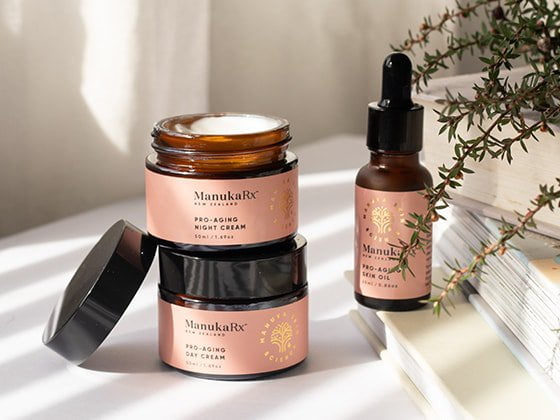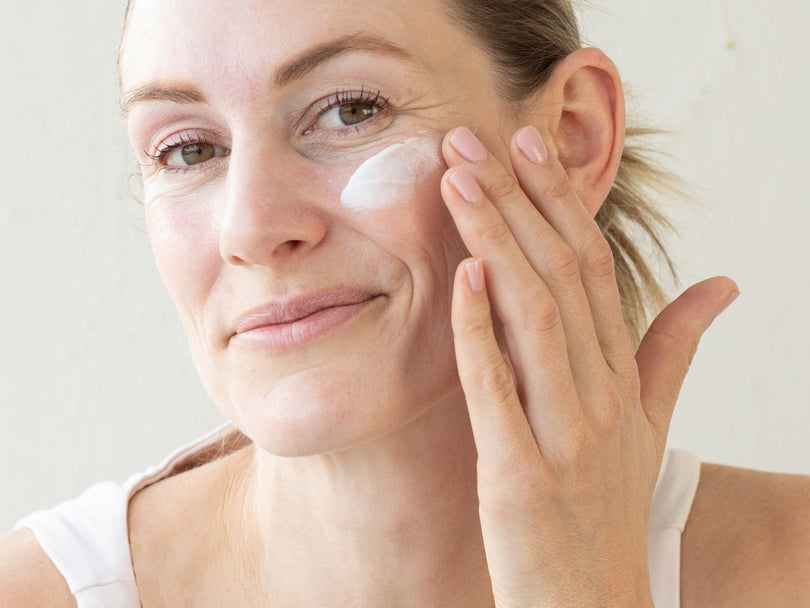Frankincense Oil: Benefits for Skin & How to Use on Your Face

Frankincense essential oil is made from the Frankincense - or Boswellia sacra - tree. It's been used for hundreds of years in traditional medicine and has made a recent comeback in the world of natural skincare.
Read on to find out the history and uses of frankincense, how it’s made, the major frankincense oil benefits for skin, and the correct way to apply this essential oil to your face.
About the Frankincense Tree

Frankincense, also known as olibanum, has been a staple of Old World traditional medicine for centuries. It’s derived from the resin of the Boswellia sacra tree, a plant that thrives in the dry, mountainous regions of India, Africa and the Middle East.
This hardy tree is slashed or cut to produce a clear resin, which is harvested once hard. Frankincense can also be sourced from other varieties of the Boswellia genus; however, the sacra is the main source.
The name Frankincense derives from frank-encens, meaning high-quality or pure incense. The trees can produce different coloured sap; the lighter the sap, the more 'pure' and valuable it is. The purest oil is generally found in Somalia and Oman.
The use of frankincense oil and resin dates back thousands of years. Lovers of Christmas carols and nativity tales will recognise frankincense as one of the gifts offered by the three wise men, or Three Kings.
How Frankincense Oil is Made
Frankincense essential oil is a by-product of the frankincense resin. The journey of frankincense oil from tree to bottle involves several steps.
It begins with the careful harvesting of resin from the Boswellia tree. This resin, often referred to as “liquid gold”, is then dried and subjected to steam distillation, a process that involves heating the resin to extract frankincense essential oil.
The steam distillation method is gentle and ensures that the oil retains its potent properties (all the best essential oils are made gently, to retain the essence of the plants from where they come). After distillation, the frankincense oil is filtered and bottled.
Benefits of Frankincense Oil for Skin
Antibacterial and Antifungal Properties
Frankincense oil contains limonene, a compound known for its antibacterial and antifungal abilities. Coupled with its natural anti-inflammatory properties, this makes frankincense oil an excellent natural remedy for promoting skin healing and maintaining skin health, particularly in acne-prone skin.
By applying a few drops of frankincense oil to the skin, you can help keep acne-causing bacteria and oily skin at bay, preventing breakouts and skin irritation and promoting a clear, radiant complexion.
Anti-Aging and Skin Tightening Effects
Research suggests that frankincense oil may promote collagen production in aging skin, and one study found its effects on human dermal fibroblasts may help reduce inflammation and prevent scar tissue formation.
The astringent properties of frankincense oil make it a promising anti-aging therapy for tightening mature skin and reducing the appearance of fine lines and wrinkles. Regular use can lead to firmer, smoother skin, enhancing your youthful appearance to improve skin tone without the need for harsh chemicals.
Promotes Cell Regeneration
Frankincense oil is also known for its cytophylactic properties, which stimulate the generation of new cells and aid in skin repair and regeneration. This not only helps in healing damaged skin faster but also contributes to a vibrant, rejuvenated and glowing skin tone, making it beneficial for aging or damaged skin.
Other Frankincense Health Benefits
The health benefits of frankincense don’t stop at skincare. For instance, frankincense extract has shown potential benefits for rheumatoid arthritis and other health conditions associated with inflammation, including asthma and oral health issues, due to its ability to help lower acute inflammatory parameters.
Frankincense has been shown to help with digestive issues when taken orally, able to soothe the symptoms of conditions like irritable bowel syndrome and ulcerative colitis by reducing inflammation and promoting a healthier gut lining.
It’s also sometimes used to fight cancer as a supplement to traditional cancer treatment, as it may prevent cancer cells – such as the tumor necrosis factor – from hanging around or infecting healthy cells.
How to Use Frankincense Oil on Your Face

Because frankincense oil is a potent essential oil, you shouldn’t apply it directly to your face. No pure essential oil should be used in this way, as it may lead to irritated skin reactions like redness and rough patches.
Instead, the best way to topically apply frankincense oil to your face is to first dilute its strength with a carrier oil or moisturiser. These essential oil blends are the ideal solution, giving you the benefits of frankincense oil while reducing the risk of irritation.
How to dilute frankincense oil? Mix a few drops of frankincense oil with a carrier oil like jojoba oil, almond oil, grapeseed oil or coconut oil. After doing a patch test to check for any reactions, you can apply the oil blend to your face.
The recommended ratio for essential oil facial blends is 1-2%. For instance, if you have 100ml of carrier oil, add 1-2ml of frankincense, and/or other essential oils like myrrh oil. One drop of essential oil from a dropper is generally equal to 0.05ml, so this translates to about 20 to 40 drops.
It’s best to start on the weaker side with just a few drops of frankincense oil to see how your skin responds. You can then work your way up to higher strengths if your skin can tolerate it, or try using a rose quartz facial roller to help the essential oil penetrate deeper into your skin.
Other Ways to Use Frankincense Oil

Frankincense oil, as with many essential oils, is incredibly versatile and can be incorporated into your daily routine in several ways:
- Aromatherapy: Add frankincense oil to an oil diffuser to create a calming atmosphere that promotes relaxation and pain relief and reduces stress.
- Massage: Incorporate frankincense oil into your massage oil to benefit from its anti-inflammatory effects and to promote relaxation and relief from joint pain.
- Inhalation: For a quick stress-relief method, inhale frankincense oil directly from the bottle or add a few drops to a handkerchief or cloth. (What does frankincense smell like? The aroma is earthy, woody, and sweet.)
- Hair Care: Add a few drops of frankincense oil to your next argan oil hair treatment – it may help to strengthen your roots.
Precautions and Contraindications
While frankincense oil is generally safe, it’s important to be aware of certain precautions:
- Pregnancy: Avoid using frankincense oil during pregnancy, as it may stimulate the uterus and cause contractions.
- Breastfeeding: Refrain from using frankincense oil while breastfeeding, as it can pass into breast milk and potentially harm your baby.
- Allergies: Conduct a patch test before using frankincense oil on your skin to check for any allergic reactions, especially if you have sensitive skin.
- Medications: If you are on blood thinners or diabetes medications, consult with a healthcare professional before using frankincense oil, as it may interact with these medications.
By following these guidelines, you can safely enjoy the numerous benefits of frankincense oil in your daily life.
Why not try ManukaRx Blemish Oil – the combination of frankincense with mānuka, lavender and jojoba oil helps to lessen signs of acne and works to prevent future breakouts.






